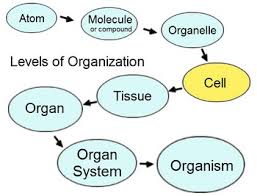Light ‘drives’ adaptation; nothing ‘drives’ evolution (2)
See: Light ‘drives’ adaptation; nothing ‘drives’ evolution
Excerpt (from 1996):
Most consider viruses to be a legion of cripples, sterilised by ultraviolet radiation and rendered impotent by hosts that are largely immune to their threat. But a few researchers take the opposite view. And if they turn out to be right, viruses could radically alter the balance of life in the oceans, ripping away huge parts of the food web that supports whales, sea birds and the fisheries on which many people rely.
See also: Riding the Evolution Paradigm Shift With Eugene Koonin
Excerpt:
This is a good point to make. The entire evolution of the microbial world and the virus world, and the interaction between microbes and viruses and other life forms have been left out of the Modern Synthesis…
From 1996: From Fertilization to Adult Sexual Behavior
Yet another kind of epigenetic imprinting occurs in species as diverse as yeast, Drosophila, mice, and humans and is based upon small DNA-binding proteins called “chromo domain” proteins, e.g., polycomb. These proteins affect chromatin structure, often in telomeric regions, and thereby affect transcription and silencing of various genes (Saunders, Chue, Goebl, Craig, Clark, Powers, Eissenberg, Elgin, Rothfield, and Earnshaw, 1993; Singh, Miller, Pearce, Kothary, Burton, Paro, James, and Gaunt, 1991; Trofatter, Long, Murrell, Stotler, Gusella, and Buckler, 1995). Small intranuclear proteins also participate in generating alternative splicing techniques of pre-mRNA and, by this mechanism, contribute to sexual differentiation in at least two species, Drosophila melanogaster and Caenorhabditis elegans (Adler and Hajduk, 1994; de Bono, Zarkower, and Hodgkin, 1995; Ge, Zuo, and Manley, 1991; Green, 1991; Parkhurst and Meneely, 1994; Wilkins, 1995; Wolfner, 1988). That similar proteins perform functions in humans suggests the possibility that some human sex differences may arise from alternative splicings of otherwise identical genes.
Forthcoming, two decades later: New trends in evolutionary biology: biological, philosophical and social science perspectives
Excerpt:
Developments in evolutionary biology and adjacent fields have produced calls for revision of the standard theory of evolution…
My comment: Topics mentioned in the abstracts (my categories):
Science
The physics of organisms
multilevel and reciprocal causation
adaptability could influence the inherited characteristics of an organism’s descendants
phenotypic traits have complementary rather than antagonistic functions
‘second inheritance system’, built on the shoulders of the primary genetic inheritance system
adaptive design at the level of genes, individuals and societies
…niche construction co-directs adaptive evolution
integrated symbioses
‘developmental niche construction’ as a framework to integrate findings from fields ranging from molecular biology to developmental psychology
epigenetic inheritance
the involvement of epigenetic inheritance in adaptive evolutionary change
inherited yet non-genetic adaptation.
somatic inheritance, maternal effects and DNA methylation.
processes that sustain persisting lineages.
understanding how ecological disruptions can stimulate productive, often abrupt, evolutionary transformations
Pseudoscientific nonsense
a distinction between epigenetic and exogenetic inheritance
different narratives as to exactly what such an evolutionary approach entails.
how different mechanisms of inheritance contributes to evolution.
understanding of how important the process has been in shaping the evolution of animal form.
a closely allied distinction between ‘organic’ and ‘cultural’ evolution?
domestication to serve once again as a model system
‘human like’ modes of behaviour (and presumably more biocultural evolution)
See for comparison to everything currently known to serious scientists about biophysically constrained energy-dependent RNA-mediated protein folding chemistry.
Excerpt:
…the study of phenotypic plasticity, epigenetic and exogenetic inheritance, have not yet demonstrated the need for any revolutionary change in evolutionary thought. For us they highlight the extent to which proximate developmental mechanisms can inform ultimate biology.
My comment: Twenty years after our review of energy-dependent RNA-mediated molecular epigenetics and cell type differentiation, this exemplifies the overwhelming foolishness of theorists who seem to think that not all developmental mechanisms are energy-dependent and biophysically constrained by the physiology of reproduction.
See also the discussion attempt at: What does DNA have to do with the Origin of Life ?



[…] See also: Light ‘drives’ adaptation; nothing ‘drives’ evolution (2) […]
[…] See also Light ‘drives’ adaptation; nothing ‘drives’ evolution (2) […]